Energy at Work: From Curiosity to Innovation
Can you imagine life without electricity for a day? No way! This was one of the students’ reactions when the teacher asked this question. In their minds, no electricity means no light, no video games, no devices. It will be a terrible day! It is a question intended to pique students’ interest and curiosity about the unit. Then, we begin to unpack our unit by playing puzzle games using a website called Puzzle Maker. Students cannot hide their excitement to play the game and immediately get their devices. There are about 70 puzzle pieces to solve. I still remember the wave of enthusiasm that swept through the room as students enthusiastically embraced the challenge of digital puzzles, their eyes sparkling with a mix of curiosity and delight. After having fun with the puzzle activity, we continue to unpack essential elements in this unit such as the key concepts, learner profile attributes, and the connection with the United Nations Sustainable Development Goals. The unpacking activity is important to get students’ prior knowledge and overview of what they will be learning in this unit.

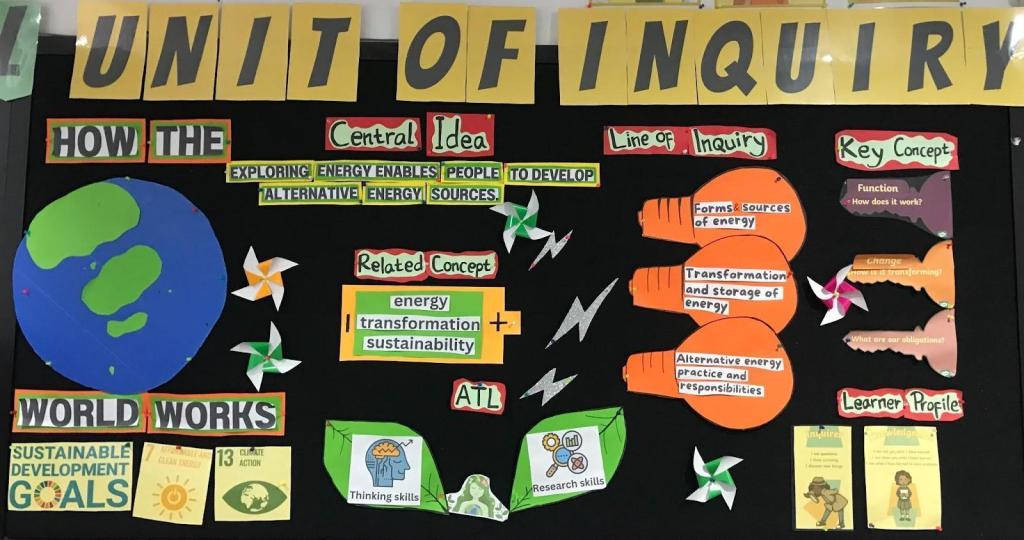
The next step is to have students share their thoughts about the word “energy” using the see, think, and hear template. This helps students recognize that sometimes energy can be seen or heard, and energy is not something abstract at all. The answers they give to this question vary from the electricity they use every day to the superpowers they see in movies. As students share their current knowledge of energy, they display their interest in finding out the correct definition by using credible sources. A simple summary is that students understand that energy is the ability to do work.
Furthermore, students observe different types of energy in their daily lives to support the first-line of inquiry about the sources and forms of energy. Students use the M.E.L.T.S (Mechanical, Electrical, Light, Thermal, Sound) energy template, which is effective in helping students identify different forms and sources of energy. It is also interesting to note that students can give specific examples of different forms of energy as well.
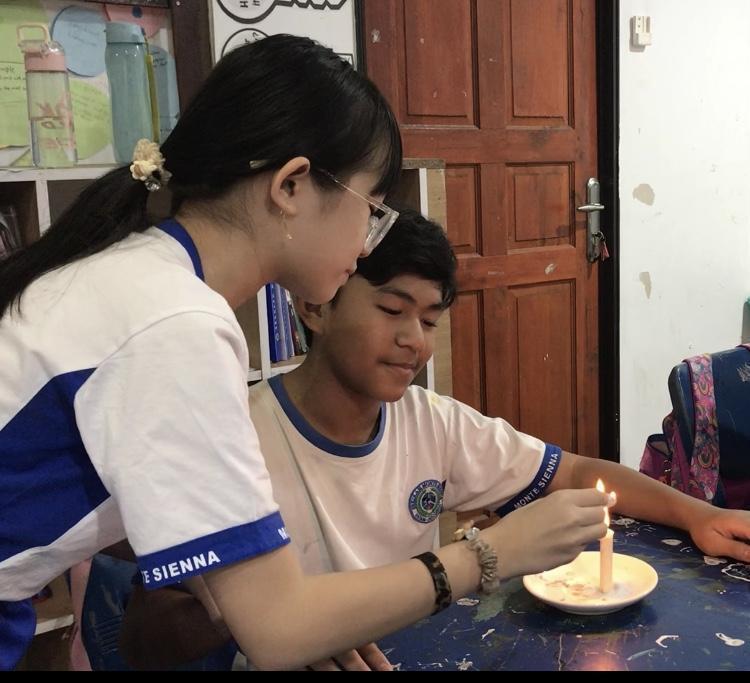

We continue our fascinating learning experiment by conducting science demonstrations in the classroom using simple tools such as a rubber band, small fan, iron, and a piece of fabric. There is a wide range of positive emotions that appear among students during this activity, such as curiosity, uncertainty, surprise, intellectual joy of understanding, and amusement. The fifth graders continue their learning adventure by investigating the principles of physics through hands-on exploration with the rotation table station mode. As the fifth graders experimented with five simple experiments about energy storage and transformation at different stations, radiant smiles adorned their faces.
Students’ learning journey will not be complete if they do not conduct their own experiment in this unit. Our students accept the challenge from the teacher to do their own experiment to explore energy storage and energy transformation. Taking part in this task will enhance students’ ability to conduct research, manage themselves, and communicate with their teammates.
In the next activity, students explored alternative energy and how human actions contribute to energy conservation. Our students and their families took part in a 7-day Energy- Saving challenge. The involvement of students and their families in this action will increase family awareness to save energy and spread the good action between families so we can inspire our school community. Some activities that can be implemented in daily life in order to save energy are turning the tap off when brushing teeth, switching the lights off when no one is in the room, and so on.

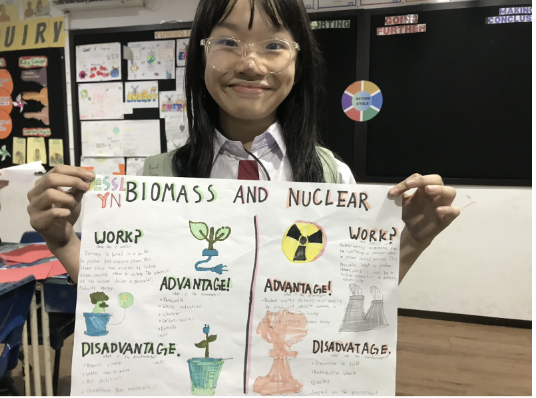
Moving on to the third line inquiry, we further explored renewable and non-renewable energy sources. Students compare and contrast energy resources to examine critically the advantages and disadvantages of both. Then, students get wider exposure by watching an informative video about the third-largest floating solar farm in the world which is located in West Java, Indonesia. Through this video, our students are introduced to Indonesia’s commitment to develop green energy in collaboration with the United Arab Emirates.
Our students rose to the challenge with creativity and innovation, devising alternative energy products and prototypes that not only met expectations but surpassed them. From solar ovens to windmill farms, their diverse array of ideas showcased their dedication to sustainability and environmental consciousness. What’s even more commendable is their initiative to incorporate recycled materials into their projects, further emphasizing their commitment to reducing waste and preserving our planet. Their presentations during the Celebration of Learning were a testament to their hard work and ingenuity, leaving a lasting impact on the school community. We are incredibly proud of their accomplishments and look forward to witnessing their continued growth as responsible global citizens.

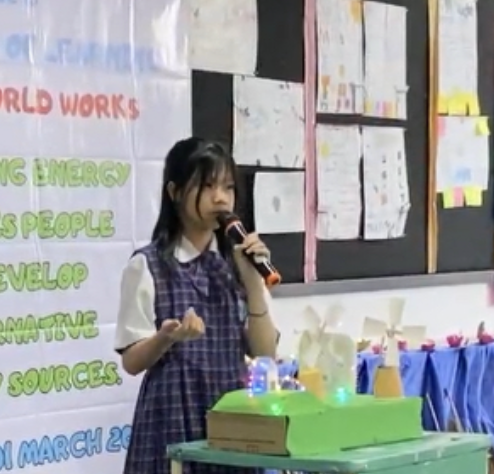

Ms. Mugni Bustari
Grade 5 Homeroom Teacher
mugni.bustari@montesiennaschool.com
Sekolah Monte Sienna
Batam City, Indonesia
Empowering Young Entrepreneurs: Nurturing Creativity, Collaboration, and Global Citizenship
This unit is probably one of the most exciting and challenging units that the Grade 4 students of Sekolah Monte Sienna have experienced. We were inquiring into how the “development of trade contributes to the world in many ways” with the lines of inquiry (1) different trade systems, (2) trade relationship between empires and (3) the impacts of trade on human progress and the world. Somehow, our class managed to spearhead the inaugural PYP KIDPRENEUR in our school with the theme “Nurturing Creativity, Entrepreneurship, and Teamwork for a Connected World.”
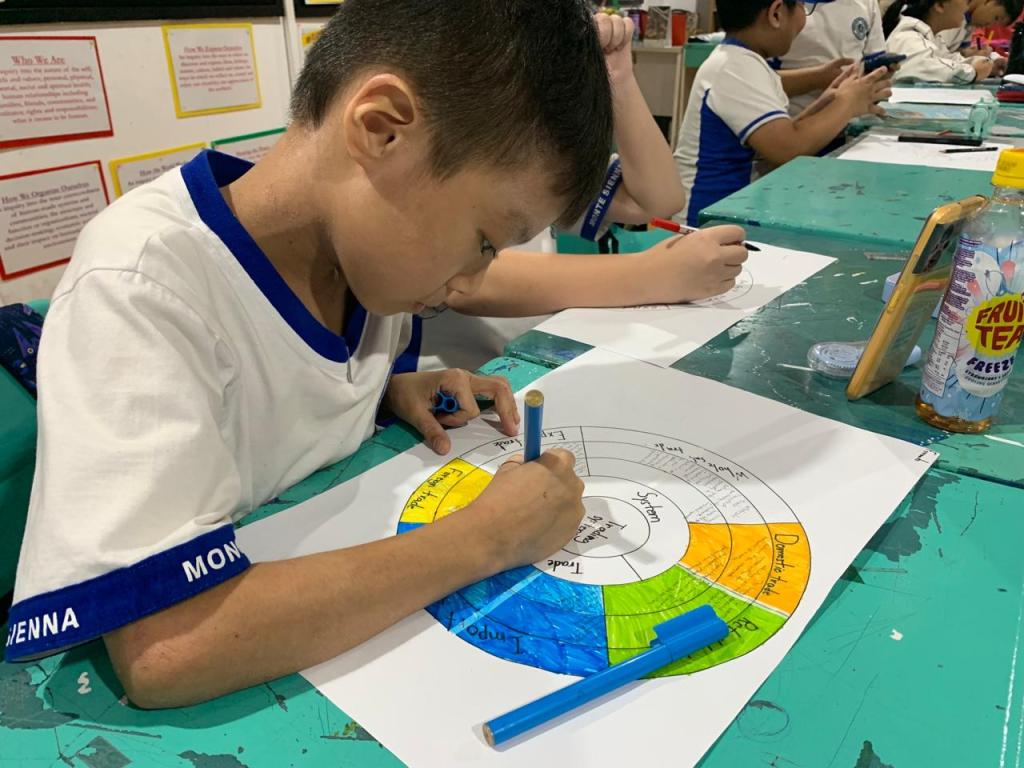
A trading game was used to introduce the unit. Through this “win win game”, they were able to learn about the benefits of free trade. The purpose of this game is for the students to show their prior knowledge of what trading is as a whole and why we need to trade.
With the use of a circle of viewpoints, students were able to identify the global supply chain in the trading system and the relationship between empires. They also used the “My Plate” graphic organizer to get started with their findings on where food comes from, which is part of our English integration.
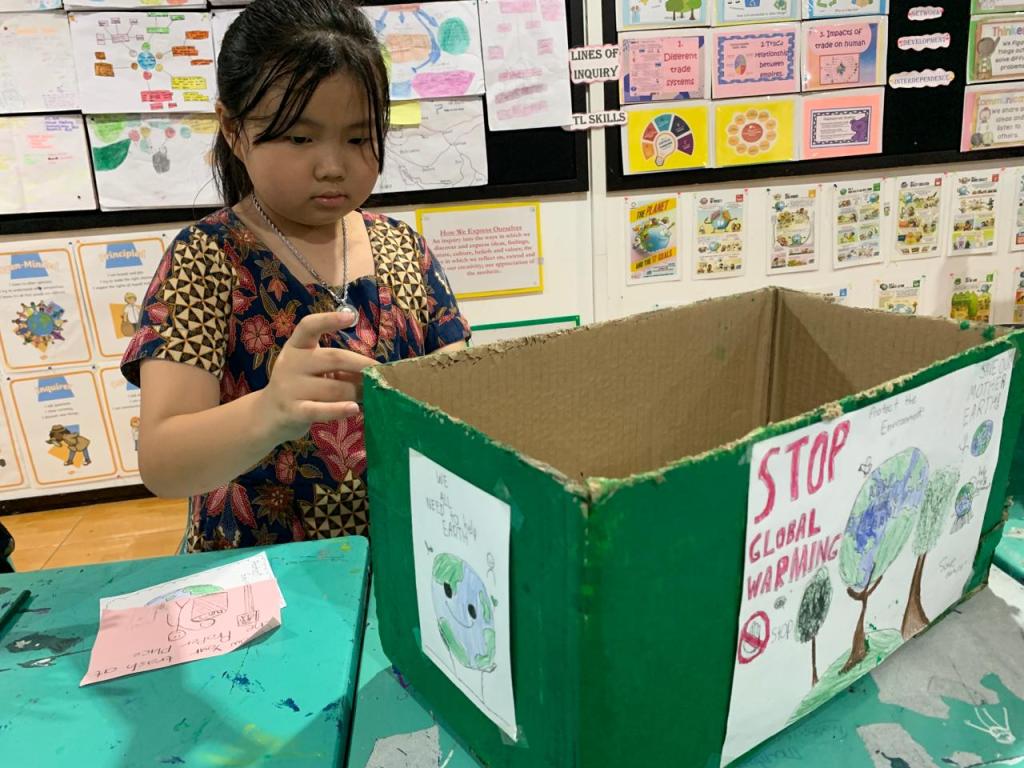
Organizing the mini-market necessitates collaboration and teamwork. The students didn’t just contemplate the goods and services to showcase on the event day; they also factored in proper disposal, aligning with their advocacy against rampant waste pollution.
As internationally-minded learners with compassionate hearts, they collected second-hand toys from each other, which constitute a portion of the items they will sell. Additionally, they fashioned a trash can adorned with a cartoon poster to underscore their environmental concern, aligning with one of the sustainable development goals.
Their planning of the mini-market extends beyond mere trade; it’s also a means of aiding children in need, a cause they became aware of while exploring the rights and responsibilities of children in our previous unit. With this in mind, they conceived the idea of hosting the mini-market as part of their fundraising endeavors to support the less fortunate children. This initiative reflects their involvement in the government’s poverty alleviation program and their advocacy to amplify the voices of these children, who hunger not just for food but also for education and care.
Finally, the most-awaited event came. The PYP KIDPRENEUR served as a platform for the students to demonstrate their entrepreneurial spirit by eagerly taking on the challenges of turning their ideas into reality. They assumed the roles of up-and-coming entrepreneurs and learned valuable skills like product development, marketing, and financial management. This event provided them with a platform to gain practical experience in entrepreneurship, which will serve as a solid foundation for future opportunities. It was truly inspiring to witness our students confidently applying their communication, social, and self-management skills throughout the event.
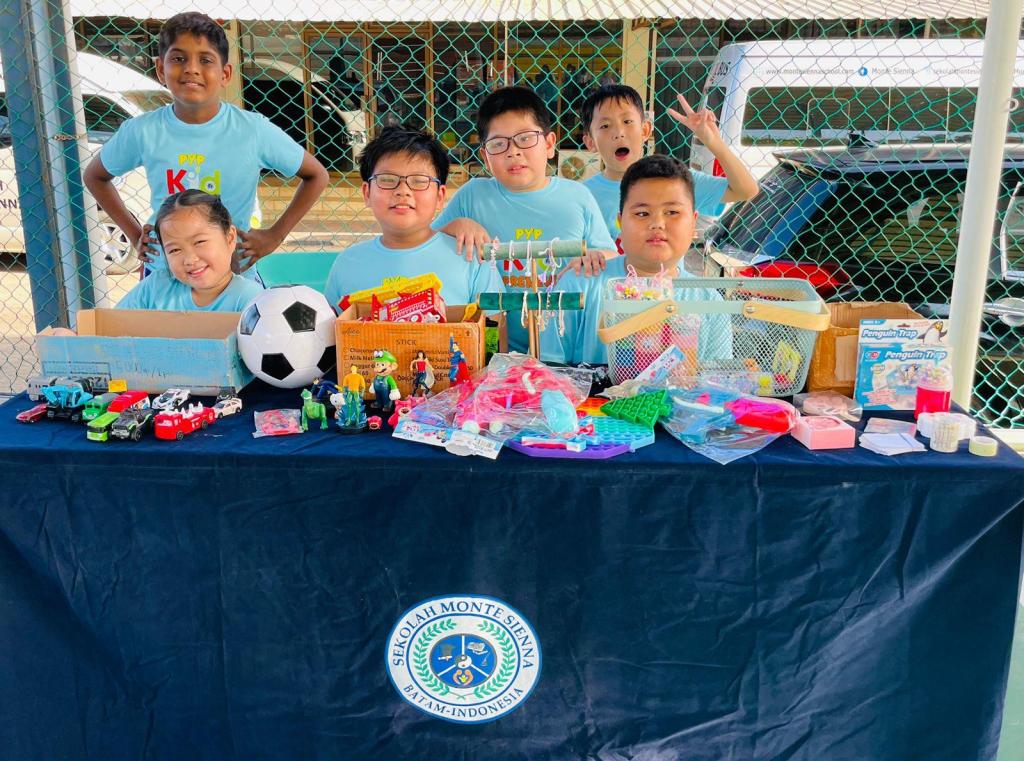

In addition, the involvement of parents played a crucial role in bridging the gap between the classroom and the real world. By actively participating in their children’s entrepreneurial ventures, parents helped reinforce the practical applications of academic concepts. They effectively demonstrated the relevance of skills such as creativity, teamwork, and problem-solving in a real-world context.
Indeed, they stand as our budding entrepreneurs, brimming with dreams and aspirations not only for themselves but also for those within their community. Let us help them to fulfill their dreams and turn these dreams into reality.
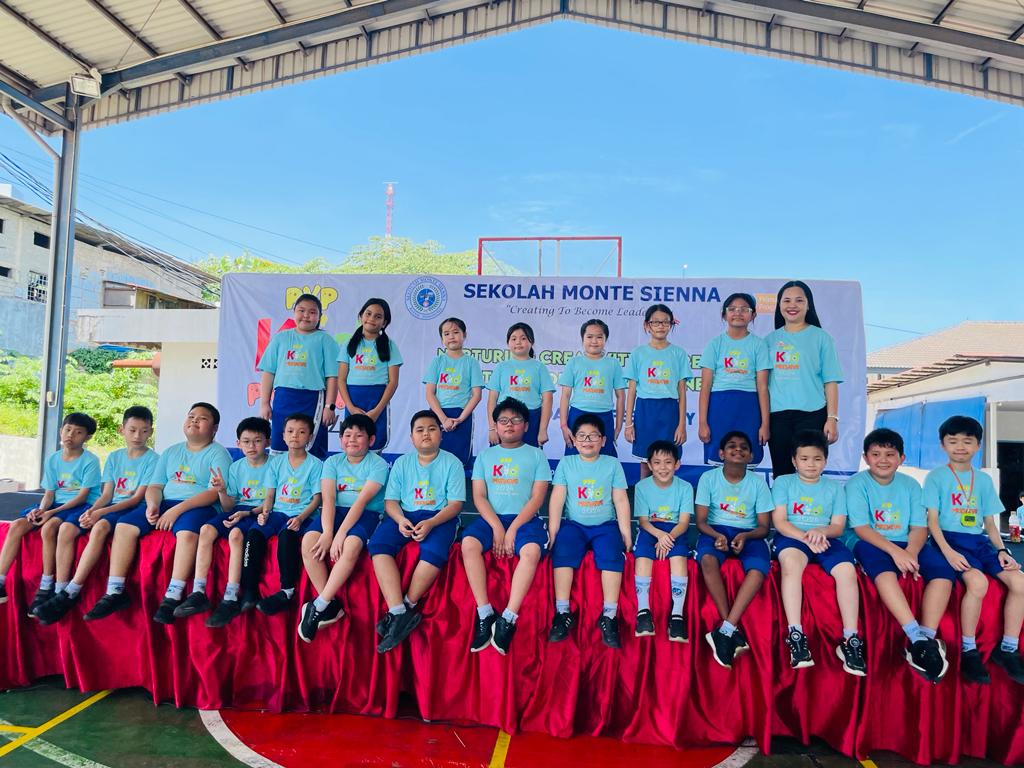
Ms. Evelyn Historillo
Grade 4 Homeroom Teacher
evelyn.historillo@montesiennaschool.com
Sekolah Monte Sienna
Batam City, Indonesia
From Whif Whaf to Champions: Exploring the World of Table Tennis
With the central idea “Exploration leads to discoveries, opportunities, and new understanding,” the Grade 3 students embarked on an exciting exploration into the fascinating world of table tennis. Together, we uncovered its origins, witnessed its evolution, and experienced the thrilling excitement of this historic and enjoyable sport.
Table tennis began as a simple pastime in households and has since become a dominant force, leaving a lasting impact on the world of athletics. The sheer excitement and spectacle of table tennis have catapulted it to the prestigious stage of the Olympics, where the world’s finest athletes display their skills, agility, and strategic prowess. From its humble beginnings to its global fame, this is a sport that knows no boundaries.
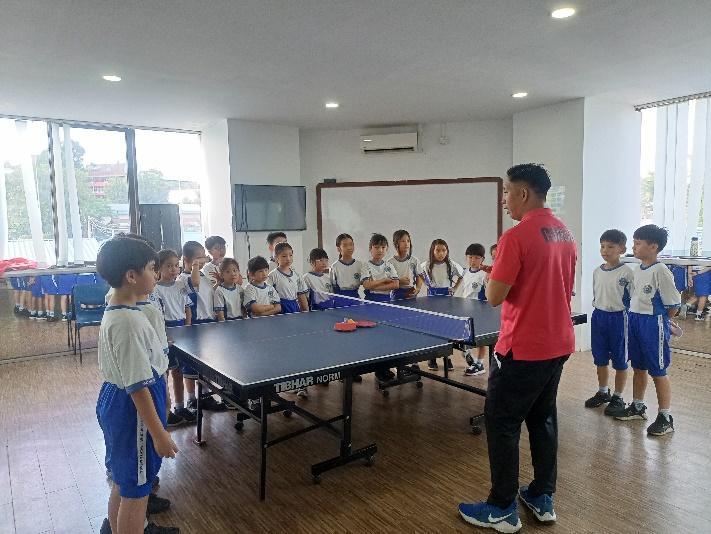
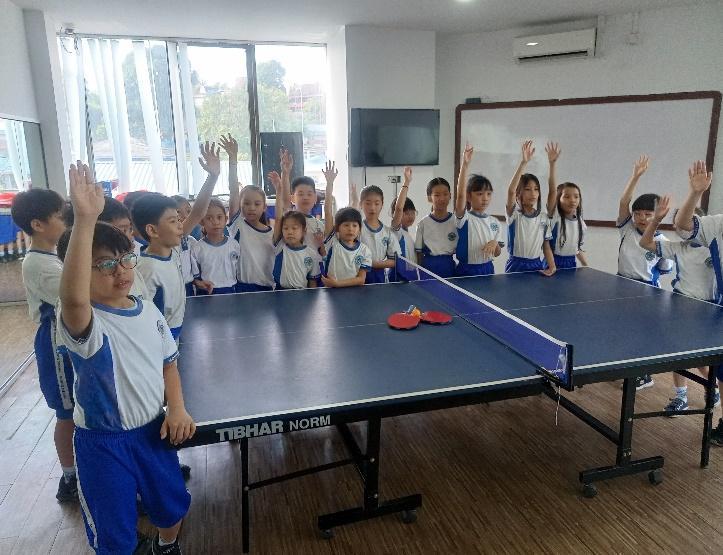
During our Tuning In, students were introduced to fascinating facts about the sport. They learned that the game was initially called “whif whaf” before it became ping pong and eventually table tennis. This prompted them to ponder the reason behind this unique name. One student suggested that it might be because of the distinct sound made when the ping pong ball is struck.
In addition to this discovery, the students explored the historical practices of table tennis. They discovered that in the past, a cigarette box was used as a makeshift paddle, a golf ball served as the ball, and books were cleverly positioned as boundaries in the middle of the table. Interestingly, matches were played on dining tables after dinner. The lesson stimulated engaging discussions and provided valuable insights, making it an enriching experience for all the students involved.
LEARNING THE SKILLS
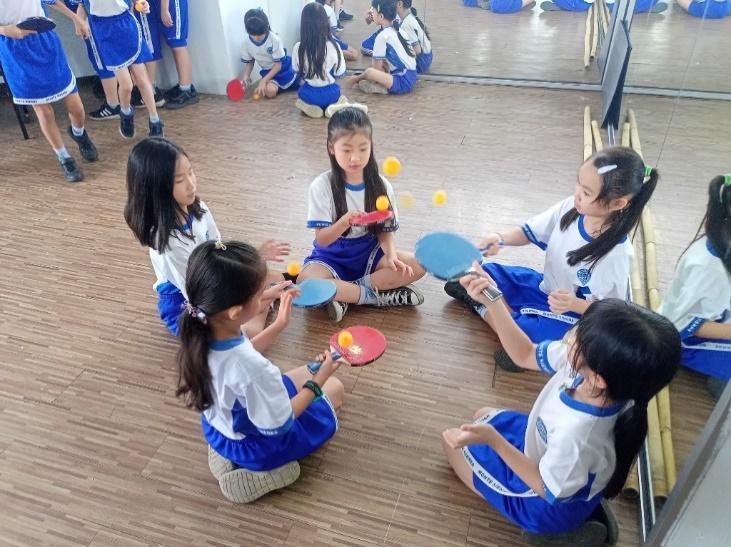
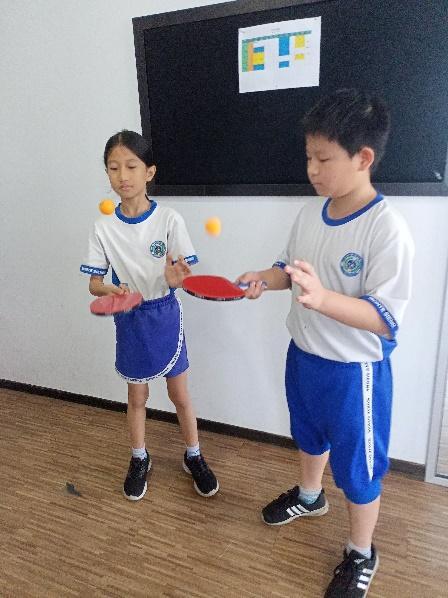
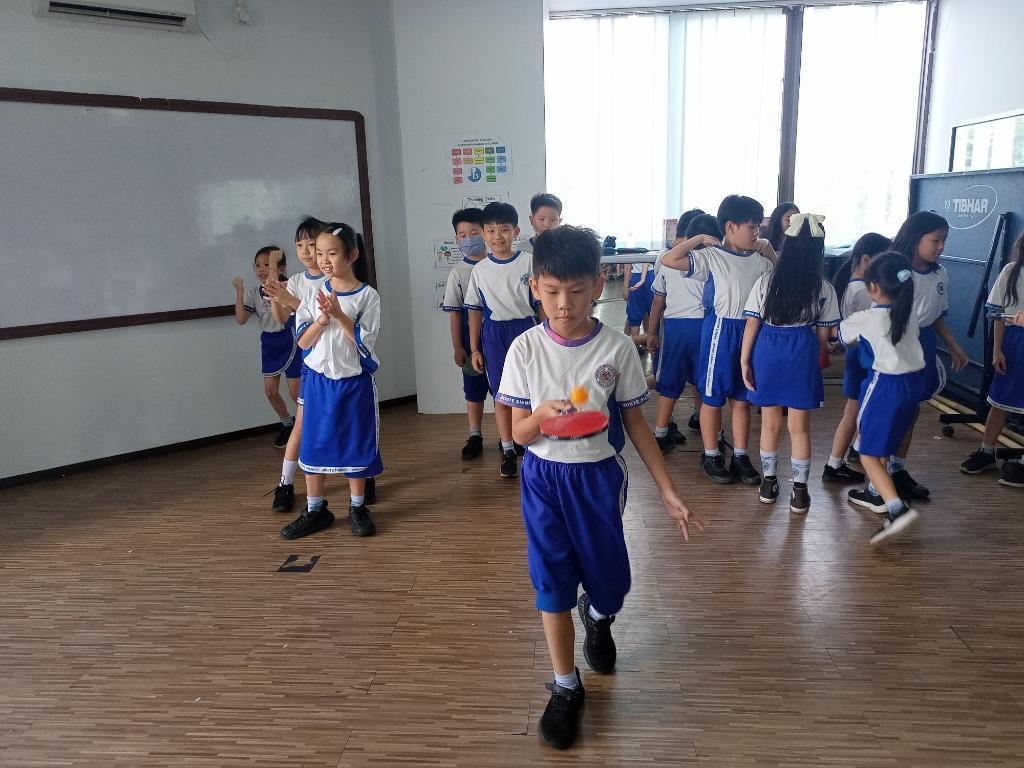
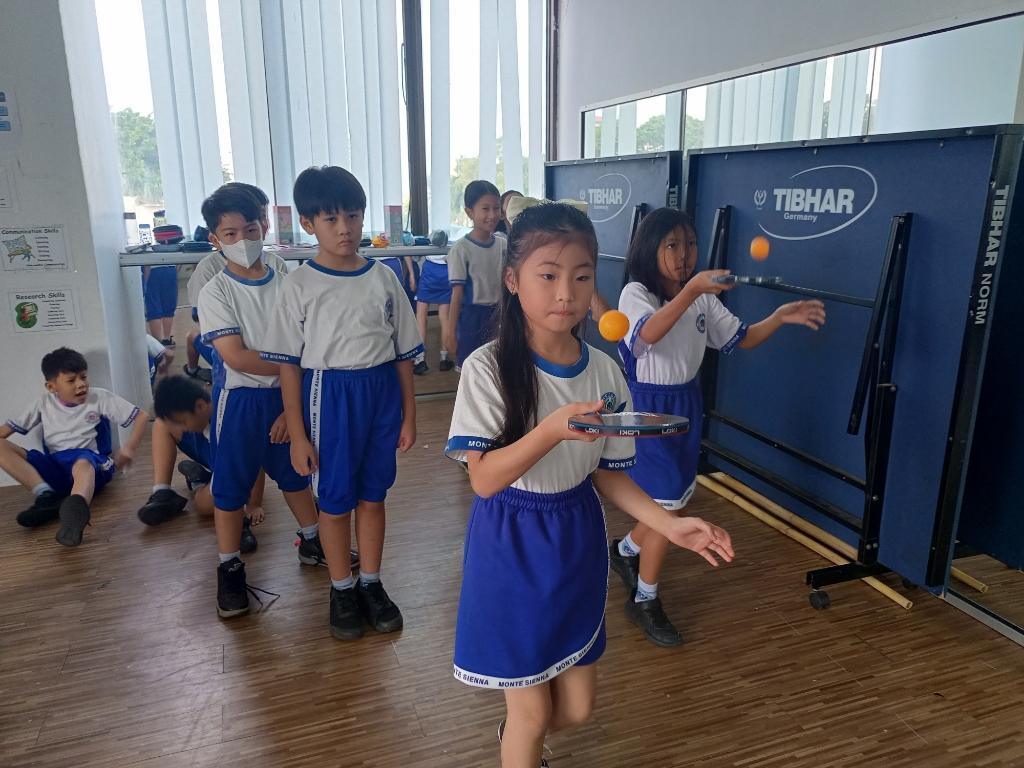
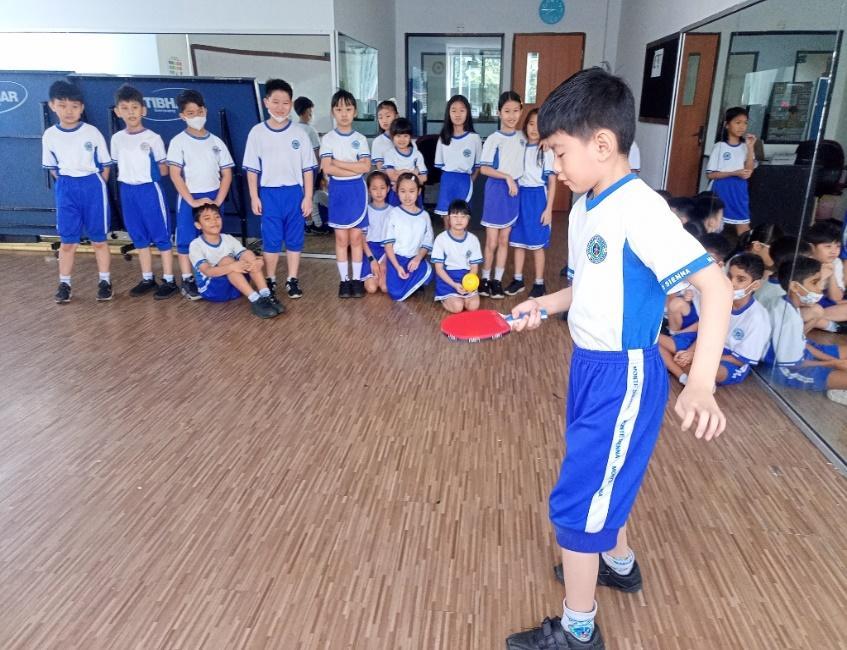
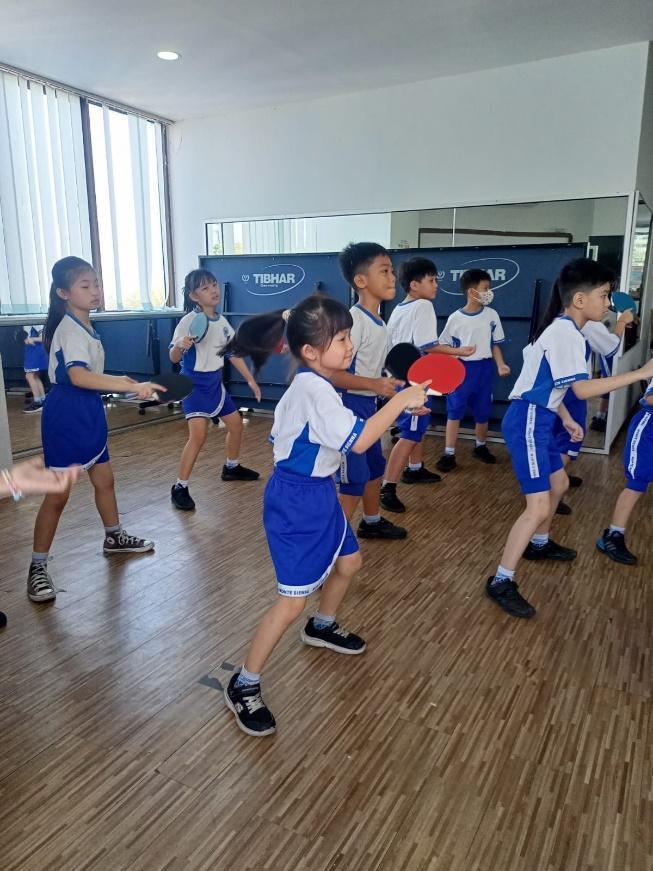
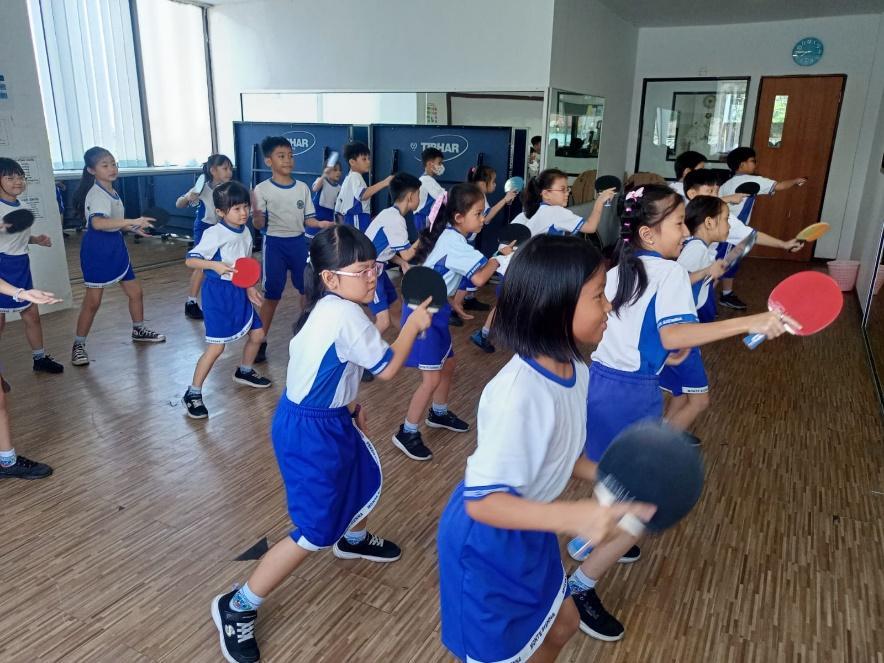
In our exciting journey through the world of table tennis, we practiced holding the paddles correctly and bouncing the ping pong ball with control. We spent almost 2-3 weeks mastering the challenge of bouncing the ball, but it was so rewarding! We also learned how to find the sweet spot in the middle of the paddle to bounce the ball easily and enhance our eye-hand coordination and focus.
Moreover, we discovered cool techniques like backhand drives and forehand loops, feeling like we were unlocking a secret language of moves and strategies!
THE GAME
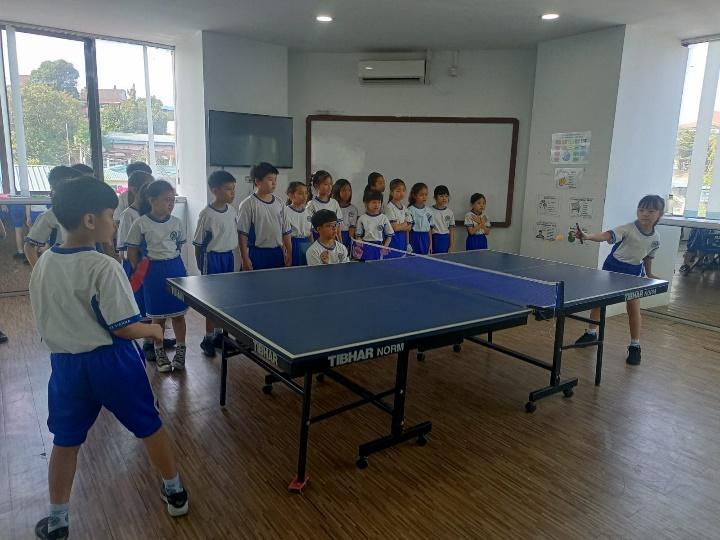

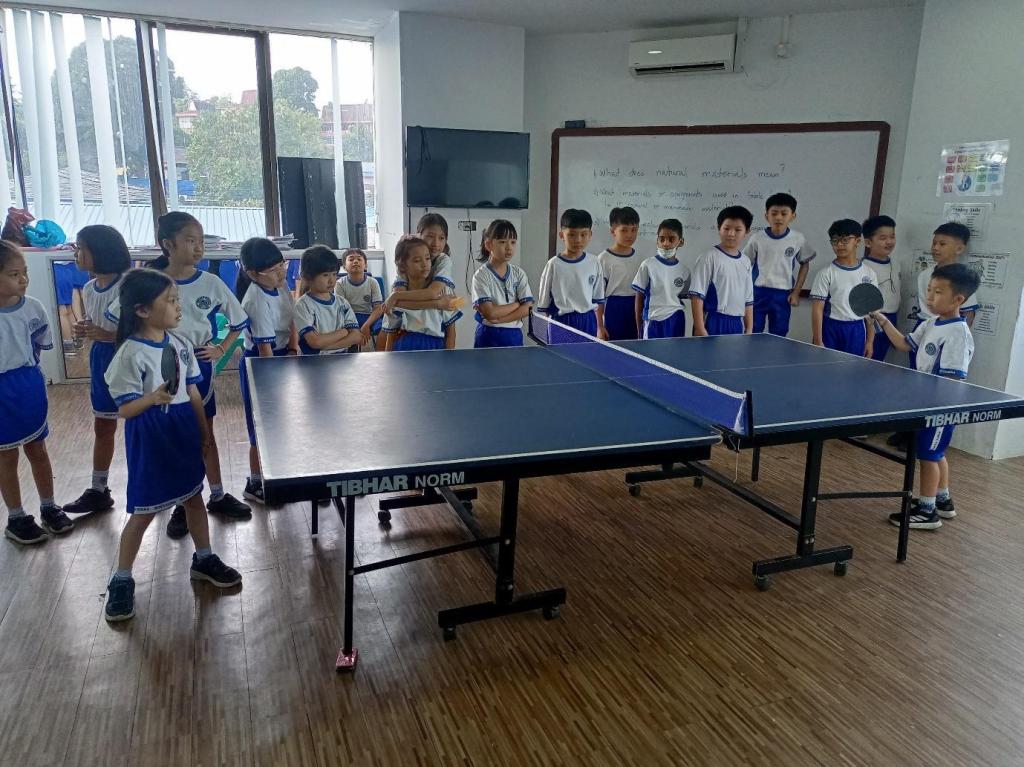

The long-awaited day is finally here! It’s time to put our table tennis skills to the test and demonstrate what we’ve learned. We’re extremely excited to play and impress everyone with our abilities. Despite the challenges we faced, we never gave up. Learning with our friends has been an absolute blast and has brought us immense joy. We’re determined, committed, patient, and enthusiastic, and we truly believe that one day we will become champions in this sport.
This is just the beginning of our journey, and we can’t wait to discover all the amazing things that await us in the future!
Mr. William Gumayagay
Physical Education Teacher
william.gumayagay@montesiennaschool.com
Sekolah Monte Sienna
Batam City, Indonesia
Everyone loves a story
Everyone grew up with storytelling. The importance of storytelling for children cannot be underestimated. Storytelling is part of everybody’s childhood. During this stage, children are filled with questions, creativity, imagination, inspiration, and ideas. Storytelling helps children develop empathy and respect for others while also improving fundamental reading and writing skills.
The meaning of storytelling
Storytelling is the activity of sharing or presenting a story for different purposes such as learning and entertainment. It is a two-way interaction between the storyteller and one or more listeners. Stories can be sad, dramatic, or funny. Telling a story builds an emotional connection between the storyteller and the listener. Text to self, text to text, and text to world connections are also developed.
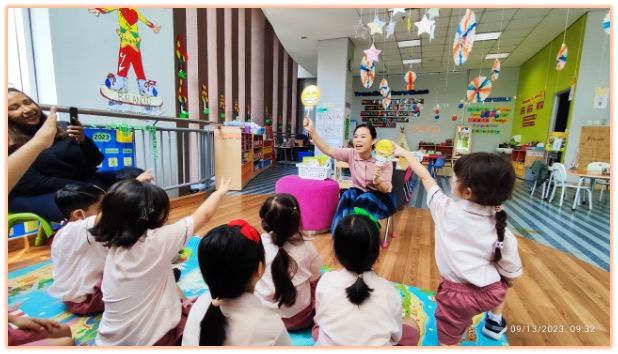
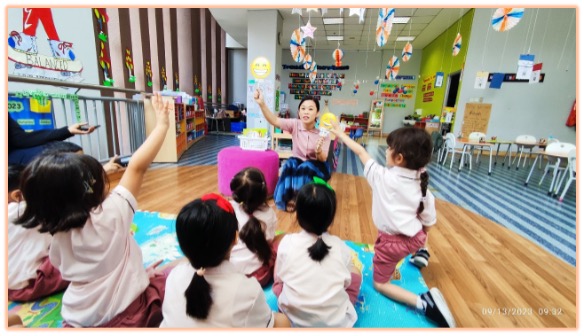
The importance of storytelling for children
- Improves language skills
Storytelling improves language skills by introducing children to varied vocabulary, new words, phrases, sentence structures and develop their reading skills.
- Enhances cognitive skills
Listening to and taking part in storytelling improve understanding, memory, and critical thinking abilities and communication skills.
- Develops moral understanding
Many stories teach important lessons about right and wrong, good or bad and taking decisions. Children learn important lessons such us kindness, generosity and honesty as well as cultural values from stories.
- Promotes imagination and creativity
Storytelling is an effective technique to encourage children’s imagination and curiosity. It can help children improve their communication and creativity. Both fiction and non-fiction stories develop their imaginative and creative thinking skills.
- Develops social skills
Listening and discussing stories in a group encourage interaction among the children. Children learn how to take turns and share ideas.
- Improves memory
Retelling stories help children increase memory by remembering the characters, plot, setting, problem, and solution.
Indeed, storytelling is important for children’s development. Children enjoy stories. Storytelling helps to deliver information in a meaningful and enjoyable way, making it easier for children to grasp and remember concepts. It also helps children create their new world, emotions, and ideas.
By: Eka Fridayanti
Elementary Co-Teacher
BINUS School Simprug
efridayanti@binus.edu
Of Chocolates and Surprises: A Teacher’s PYPX Musings
As a fifth-grade PYP (Primary Years Programme) teacher, I embark on a journey with my fifth-grade students through the IB PYP Exhibition every year. Whenever our calendar hits this time of the year, the atmosphere in the classroom undergoes a subtle shift, tinged with anticipation and purpose. There’s a palpable sense of heightened urgency and intentionality. The stress level also differs, but the excitement is conspicuous in the eyes of the students, teachers, mentors and parents. My ultimate hope each year is that my students will enjoy the journey, have an authentic inquiry and demonstrate agency in different ways.
This year’s exhibition theme in my school revolves around How We Express Ourselves. During one of our English Language Arts inquiries, we explored the vibrant and interesting world of figurative language. As part of our exploration, my class engaged in an Exit Ticket activity where they were tasked with interpreting a line from the movie Forrest Gump: “Life is like a box of chocolates.” Understandably, none of them was familiar with the movie, yet their responses were remarkably insightful. One response, in particular, stood out to me: “The quote means that life is full of surprises, just like the PYP Exhibition.” It dawned on me that the Exhibition is indeed as unpredictable and diverse as a box of chocolates.
The Exhibition, like a box of chocolates, presented a variety of topics, each student choosing a unique inquiry about the issue that intrigued them and the form of self-expression that would allow them to celebrate their personalities. At first glance, it appeared daunting, similar to staring at an array of assorted chocolates, unsure of which to pick. I watched them delve into subjects ranging from environmental sustainability to mental health, much like selecting different chocolates from a box. Just as life surprises us with unexpected flavors, my students encountered challenges in their research, navigating through the complexities of their chosen topics. Some faced the bitter taste of setbacks and lack of progress while others enjoyed the sweet satisfaction of finding solutions and breakthroughs. The Exhibition unfolded one phase at a time, revealing the depth of my students’ abilities, passions and even limitations.
Guiding the students through the Exhibition was akin to navigating the assortment of chocolates in a box, with each one requiring a different approach. Some needed gentle support, like the delicate truffle, while others demanded a firmer touch, much like unwrapping a resilient nougat. The process was a rollercoaster of emotions, reminiscent of the various tastes in a box of chocolates. There were moments of frustration and moments of joy.
Then came the Exhibition itself – a culmination of months of hard work and dedication. Like presenting a nicely wrapped box of chocolates, the students showcased their learning with confidence and pride. They spontaneously interacted with parents, teachers and visitors, explaining their inquiry and sharing their passion. From the side, I watched with a sense of fulfillment, much like when I had opened and eaten a box of chocolates.
When the Exhibition concluded, it can be said that it was a journey filled with surprises, challenges and, most importantly, the sweet taste of accomplishment. Through the IB PYP Exhibition, the students tasted the richness of knowledge, the sweetness of collaboration and the joy of discovery filled with endless possibilities waiting to be explored just like a delightful box of chocolates. Cliche as it may sound, the Exhibition is a reminder to us PYP educators that the journey of education is as diverse and delightful as the flavors our learners bring into the learning environment.
By:
Remmuel S. Santiago
Grade 5 Homeroom Teacher
Mentari Intercultural School, Jakarta
Growing Minds, Glowing Hearts: Pre-K’s Journey of Discovery
By Christania Anthonny
B.B. King, the renowned American guitarist and singer-songwriter, once shared a profound insight: “The beautiful thing about learning is that no one can take it away from you.” This impactful sentiment resonates deeply, particularly within education, prompting thoughtful reflection.
Such contemplation became evident as the Pre-K students of North Jakarta Intercultural School (NJIS) joyously celebrated the culmination of their “How the World Works” unit. The unit’s central idea emphasized the significance of animals to our lives and highlighted how our actions influence their existence in the natural world. These young and vibrant minds embarked on a transformative journey that began with tuning into the topic, followed by thorough investigation, creative exploration, and application, culminating in meaningful actions and reflective practices.
Let’s delve into the fascinating chapters of their learning expedition…
Tuning In
In the initial phase, students were encouraged to actively share their knowledge about animals and their habitats. Paired with their buddies, they engaged in collaborative discussions, translated their thoughts into imaginative drawings, and presented their collective findings. This marked an opportune moment to gauge the extent of the student’s pre-existing understanding of the subject matter.
Investigating
The investigative phase looked deeper into the intricacies of animals and their habitats. The wealth of new knowledge that unfolded during this exploration captivated the children.
Beyond this, we seamlessly integrated mathematical concepts into the learning experience. Students not only delved into the specifics of animal habitats but also applied mathematical principles to categorize animals according to their environments. They also crafted simple graphs to represent their preferences and interests in various animals visually. This interdisciplinary approach added depth and richness to their learning journey.
Creating and Applying
Now, let’s dive into the exciting segment: the individual project! For their project, the students eagerly embraced the opportunity to exercise agency by selecting their preferred animal and conducting in-depth research on their chosen species. Despite the extended time required for this stage, it flew by for them as they reveled in completing projects that would ultimately be showcased to their parents.
Throughout this creative process, they journeyed to find images of their selected animals, brainstormed about the creatures’ needs and distinctive characteristics, and delved into research to substantiate their findings. Guided by the teacher, they were provided visuals encapsulating their research, which they artfully incorporated into their projects. Upon completing their vibrant posters, the students engaged in practice sessions, presenting their projects to the class before confidently sharing them with their parents.
Witnessing these 4 to 5-year-olds navigate this intricate learning process, enhancing their critical thinking and research skills, and culminating in improved communication abilities by the project’s end was truly heartwarming.
Taking Action
In this phase, we fostered collaboration with the music and Mandarin teachers to inaugurate the Celebration of Learning. The students enthusiastically participated in singing the classic “Old MacDonald Had a Farm” song in both English and Mandarin. Additionally, they expanded their musical horizons by learning to play the tune using various musical instruments.
And now, the moment we’ve all been waiting for: the grand finale, the Celebration of Learning! This marked a pivotal juncture for the students to showcase their transformative learning journey and present their meticulously crafted projects to their parents. Not only did they get to work on their ATL skills, like being effective communicators and enhancing their research and thinking skills, but this experience also played a significant role in nurturing their confidence as individuals, as they adeptly addressed and engaged with large audiences during the event.
While it may not have been a flawless showcase, the experience was undeniably meaningful. Acknowledging the challenges encountered throughout the process, we embrace the opportunity for reflection and continuous improvement. The Celebration of Learning transcended being merely an “event”; it encapsulated a profound facet of purposeful learning. For our young learners, it wasn’t just a presentation—it was their world of adventure, a canvas on which they painted the colors of exploration, growth, and discovery.
Reflections from the IB Dunia Early Years Job Alike Session – March 2nd – 2024 Global Jaya School
The learning environment is so important in early childhood education. As teachers, we put careful thought into designing our classrooms to be warm, welcoming, and engaging places for young children to learn and grow. When I think about my kindergarten classroom, I try to make it feel like a home away from home with different learning centers for art, science, reading, math, dramatic play, and more. I want the children to feel comfortable and safe to explore their interests.

According to the International Baccalaureate Organization (IBO), in a resource on the Primary Years Programme (PYP) titled ‘Learning Spaces’.
“A fundamental part of effective education in the PYP early years is the creation of safe, stimulating and inviting learning spaces that promote exploration, wonder, creativity, risk-taking and learning through play.”

This full-day workshop exploring how to intentionally design learning spaces for young students, was very stimulating. I loved hearing perspectives from teachers across schools. It was a lively, collaborative day that gave me many takeaways. The physical environment impacts everything from student motivation and collaboration to nurturing curiosity and inclusion. Key elements include making spaces age- appropriate, flexible, warm, and welcoming; the room layout, organization, and displays should all be closely to learning outcomes.
Arranging the furniture and learning materials in a way that promotes collaboration and discovery. Low, open shelves allow children to access materials independently and make choices. Round tables encourage children to talk and share ideas together. Interest centers with rich, open-ended materials spark curiosity, creativity and imagination. Displays of student work and documentation on the walls validate the children as capable learners. Even small details like lamps, plants, soft rugs, and family photos work to create a nurturing environment. As a teacher, I see myself as a warm facilitator of learning as the children engage with the thoughtfully prepared classroom environment. I continuously reflect on how to improve our space to best support the learning, development and joy of each unique child.

Also, I think that involving the students more in reorganizing classroom areas based on their interests and needs, perhaps creating a cozier reading corner with soft seating and baskets of books to invite deep reading time, could be beneficial. Continue to refresh displays with student work and documentation that make the learning visible.
Here are some examples of learning environments in an early childhood classroom:
* Reading Corner – This area is filled with comfortable cushions, pillows, bean bag chairs, and rocking chairs along with a wide selection of books organized by topics, reading levels, genres, etc. This invites children to cozy up and enjoy books independently or with friends.
* Drama/Pretend Play Area – Filled with child-sized wooden kitchen appliances, costumes, puppets, play food and accessories. This area sparks roleplay and imagination as children engage in dramatic scenarios.
* Block/Construction Area – Stocked with wooden blocks, Lego bricks, Magna-Tiles, and other building materials. Children design and create structures while developing spatial reasoning and cooperation skills.
* Art Center – An open space with a variety of art media including paint, clay, collage materials, pipe cleaners, beads, etc. Promotes creativity and self-expression.
* Science/Discovery Area – Materials for hands-on exploration of science concepts like magnets, gears, natural specimens, magnifying glasses, measuring tools, etc. Nurtures curiosity and inquiry.
* Math Manipulatives – Wide array of counting bears, pattern blocks, scales, rulers, and other math materials. Develops math sense and problem solving in a tactile way.
* Outdoor Classroom – Garden beds, logs, playhouse, sand/water tables and more take learning outside. Being in nature brings concepts alive.
As teachers, we should not underestimate the power of the physical environment you create. Even small details can have a significant impact on learning. The key is creating diverse spaces for active, meaningful, joyful learning through play and exploration. The environment is the teacher! It takes work, but I am sure it is rewarding.
By
Ria Agustina
Kindergarten Teacher
ACG School Jakarta
